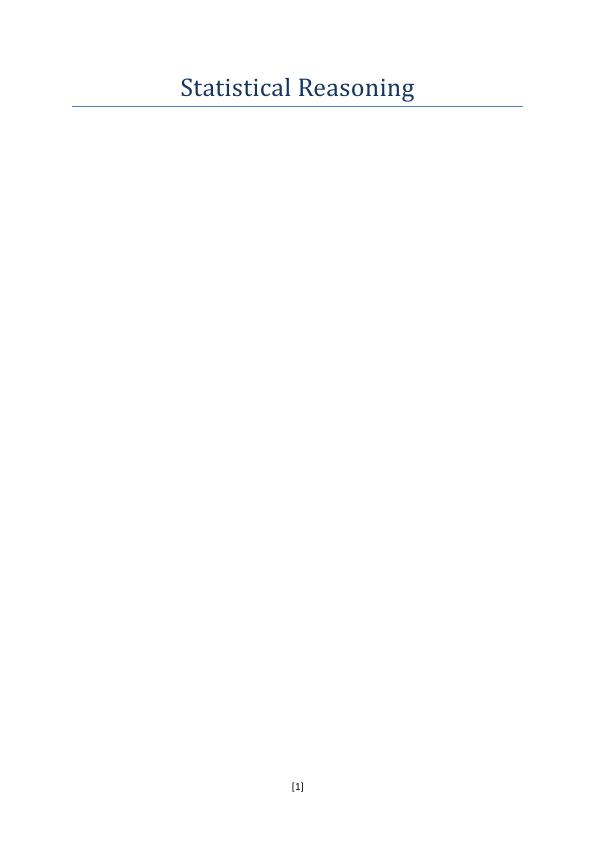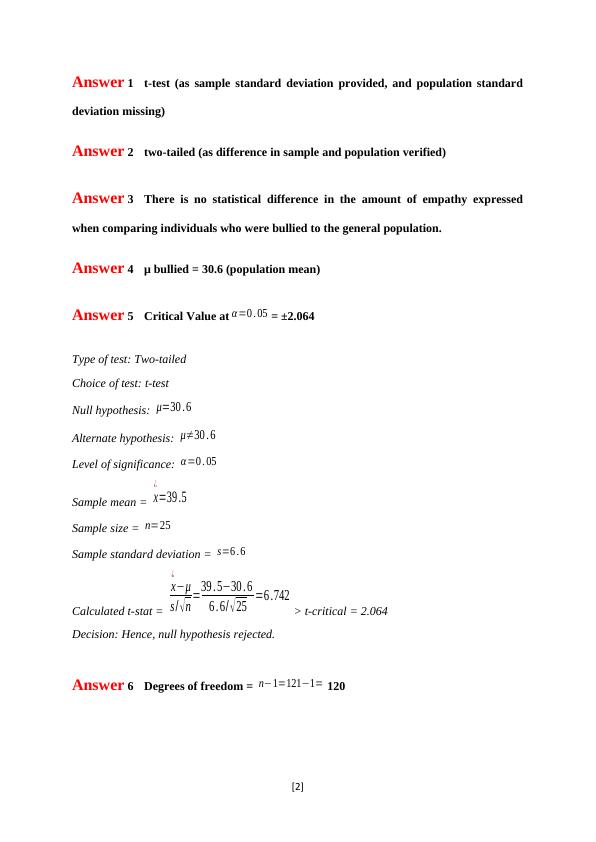Statistical Reasoning
Analyzing whether adults who were bullied as children differ from the general population in terms of their empathy for others using a questionnaire and statistical tests.
11 Pages1658 Words58 Views
Added on 2023-01-17
About This Document
This document provides explanations and examples of statistical reasoning, including t-tests, confidence intervals, and hypothesis testing. It also discusses the importance of sample size and the central limit theorem. Suitable for students studying statistics or anyone interested in understanding statistical analysis.
Statistical Reasoning
Analyzing whether adults who were bullied as children differ from the general population in terms of their empathy for others using a questionnaire and statistical tests.
Added on 2023-01-17
ShareRelated Documents
End of preview
Want to access all the pages? Upload your documents or become a member.
Confidence Interval and Hypothesis Testing for Population Mean
|5
|725
|430
Solutions to Assignment
|9
|1717
|78
Biostatistics Assignment Solutions and Examples
|7
|855
|268
Statistical Problems: One Sample t-test, Two Sample t-test, Two Sample Proportion z-test, One-way ANOVA
|8
|1638
|262
Advanced Quantitative Methods for Managers
|15
|2303
|54
Statistics - Two Sample t-test with Known and Unequal Variances
|6
|687
|236




